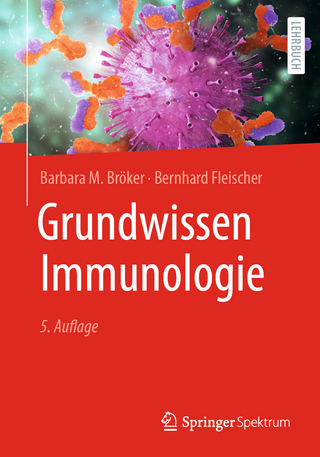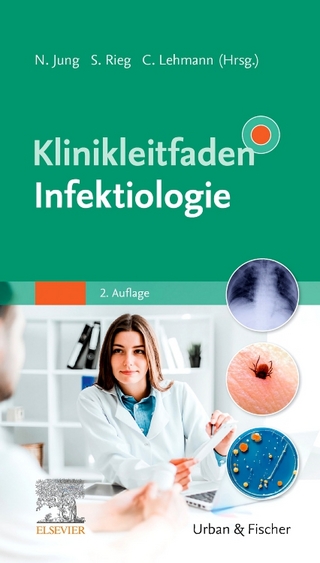
Gram-Negative Bacterial Infections and Mode of Endotoxin Actions
Springer Wien (Verlag)
978-3-7091-8398-4 (ISBN)
The relevance of international symposia and congresses has been questioned with increasing frequency. All too often, presentations at such meetings are meaningful only for very few members of the audience; fundamental scientific principles and relationships between disciplines are not always taken into account. Under present conditions rapid sharing of new information is highly desirable. However, many journals do not lend themselves to speedy exchange of information, nor do many provide the opportunity for the publication of discussion by various specialists of problems arising from different disciplines. Symposia may lend themselves, perhaps more readily, to the identification of current knowledge and the exchange of thoughts between scientists from various fields. It was particularly opportune to have the present symposium held in Vienna, where as early as 1365 the University was founded and where the medical sciences have played a dominant role in the investigation of the nature ofdiseases. It was the aim of the organizer to provide in this city the opportunity for the exchange of information and of thoughts between scientists from different disciplines and different countries. One of the many current, important problems relates to the fundamental basis of the pathogenesis of gram-negative infections. Information on immune mechanisms against these infections is in adequate; the relative role of non-specific resistance and specific immunity has not been fully elucidated. Problems regarding active immunization and the effectiveness of passively administered immuno globulins still exist even today.
I. Microbiology and Epidemiology.- The Nature of Specific and Nonspecific Gram-Negative Infections Including Enteropathogenic E. coli Enteritis..- Gram-Negative Bacteria: The Determinants of Pathogenicity.- Studies on Shigellosis and Salmonellosis.- Extrachromosomal Characters as Determinants of Pathogenicity in Enterobacteriaceae.- Gram-Negative Rods as Agents of Nosocomial Disease: Some Recent Developments, with Comments on Mixed Cultures.- Anaerobic Bacteria and their Role in Human Infections.- Immunoresponse to Gram-Negative Bacteria in Infants: An Aspect of Pathogenesis of Urinary Tract Infections.- The Differentiation of the So-Called Coliform Bacteria in Medical Specimens.- Changes and Present Status of Resistance to Antimicrobial Drugs in Gram-Negative Bacteria.- Discussion.- II. Immunology.- Opposing Effects of Immunity to Endotoxin: Hypersensitivity Versus Protection.- Infections in Immunodeficiency States.- Species Differences in the Effectiveness of Intestinal Barriers against Penetration of Inert Particulates and Bacteria.- Transformation of Mouse B-Lymphocytes by the Lipid Component of Endotoxin.- Evaluation and Action of Biological Activity of Mediators Generated from Normal Serum by Interaction with Foreign Macromolecules.- Purification of PO, Antigenic Subfraction of the Endotoxin Extracted from S. typhi O 901.- Type Specific and Cross Reactive Antigens of Gram-Negative Bacilli in Protection against Infection.- Discussion.- III. Nonspecific Resistance and Endotoxin Tolerance.- Recent Developments Especially Significant for Ascertaining the Mechanisms of Endotoxin-Enhanced Nonspecific Resistance.- Mechanisms of Endotoxin Tolerance and their Effectiveness during the Febrile Phase of Gram-Negative Bacterial Infections in Man.- The Mitogenic Activity of Lipopolysaccharides on Lymphocytes in Culture I. Blastogenic Activity of Lipopolysaccharide in Mouse Lymphocytes Depleted of Antigen Reactive Cells.- The Role of Humoral and Cellular Factors in the Stimulation of Nonspecific Resistance Induced by Endotoxin.- Genetic Control of Immune Responsiveness of Mice to a Soluble Brucella abortus Antigen.- Discussion.- IV. Pathophysiology.- Nature and Specificity of Human Erythrocyte Membrane Receptor for Bacterial Endotoxins.- The Mitogenic Activity of Lipopolysaccharides on Lymphocytes in Culture II. Comparative Study in Five Mammalian Species.- Function of Leukocytes in Defense Mechanisms.- The Effect of Detoxified Endotoxin on Bone Marrow.- Changes of the Bone Marrow in Endotoxin Shock.- Endotoxin-Induced Tumor Resistance.- Discussion.- V. Hemodynamics and Metabolism.- Correlation between Circulatory Status and Energy Metabolism in Various Tissues during Endotoxin Shock.- Prognostic Indices for Assessment of Patients with Gram-Negative Bacteremia and Shock. An Evaluation of Hemodynamic, Respiratory and Metabolic Parameters.- Abnormalities of Energy Metabolism in Sepsis and Endotoxemia.- Changes in Hemodynamics and Gas Metabolism after Endotoxin Injection.- Mesenteric Hemodynamics in Endotoxin Shock.- Effect of Endotoxin on Metabolism and the Metabolic Changes in Bacterial Shock.- Assessment of Studies in the Biochemistry and Immunology of Endotoxemia.- Carbohydrate Metabolism during Experimental Endotoxemia.- Mitochondrial Metabolic Alterations in Experimental Circulatory Shock.- Serum Lipids in Experimental Consumption Coagulopathy Induced by Endotoxin and Thorotrast.- Changes of Lipoproteinlipase (LPL) after Intravenous Injection of Endotoxin.- Discussion.- VI. Pharmacology.- Pharmacological Aspects of Endotoxin Effects.- Initial Liberation of Biogenic Amines and Effect of Further Mediators Following Application of Endotoxins.- Some Aspects of the Effects of Endotoxin, Endotoxoid, and Biogenic Amines.- Biological Consequences of Endotoxin Interaction with Complement.- Influence of Lipid A and Various LPS-Preparations on the Third Component of Complement (C3): Biological Significance of this Interaction.- Some Aspects ofthe Effects of Endotoxin on the Central Nervous System.- Discussion.- VII. Blood Coagulation.- Consumption Coagulopathy in the Course of Endotoxinemia.- The Activation of Intravascular Coagulation by Endotoxin.- Trigger Mechanism of Endotoxin-Induced Intravascular Coagulation.- Blood Coagulation Mechanism and Endotoxins: Hemostatic Defect in Septic Shock.- High Molecular Weight Derivatives of Fibrinogen and their Relation to the Total Fibrinogen Content Following the Infusion of Endotoxin in Pregnant Rabbits.- Endotoxin Effects on Kidney Morphology and Function.- Pathomorphology of Intravascular Coagulation Following Endotoxin Administration.- Discussion.- VIII. Clinical Aspects Including Shock.- Clinical Features in Shock Associated with Gram-Negative Bacteremia.- The Pulmonary Response to Sepsis and Endotoxin: Clinical and Experimental Observations.- On the Escape of Endotoxin from the Intestine.- Pyelonephritis: Pathogenesis and Unsolved Problems.- Endotoxin Shock in Obstetrics.- Clinical Use of Endotoxoid.- Discussion.- IX. Burn Disease.- Bacterial Infection in Burn Disease.- Bacteremia in the Course of Burns with Special Regard to the Initial Release of Mediators by Burn Trauma.- Pathogenetic and Immunotherapeutic Significance of a Specific Cutaneous Human Burn Toxin.- Immunization against Pseudomonas in Burn Disease.- Active Immunization against Pseudomonas aeruginosa in Burns.- Discussion.
| Erscheint lt. Verlag | 9.1.2012 |
|---|---|
| Zusatzinfo | XVI, 524 p. |
| Verlagsort | Vienna |
| Sprache | englisch |
| Maße | 170 x 244 mm |
| Gewicht | 926 g |
| Themenwelt | Medizin / Pharmazie ► Pharmazie |
| Studium ► Querschnittsbereiche ► Infektiologie / Immunologie | |
| Naturwissenschaften ► Biologie ► Biochemie | |
| Schlagworte | Bacteria • Infection • Infections |
| ISBN-10 | 3-7091-8398-7 / 3709183987 |
| ISBN-13 | 978-3-7091-8398-4 / 9783709183984 |
| Zustand | Neuware |
| Informationen gemäß Produktsicherheitsverordnung (GPSR) | |
| Haben Sie eine Frage zum Produkt? |
aus dem Bereich


